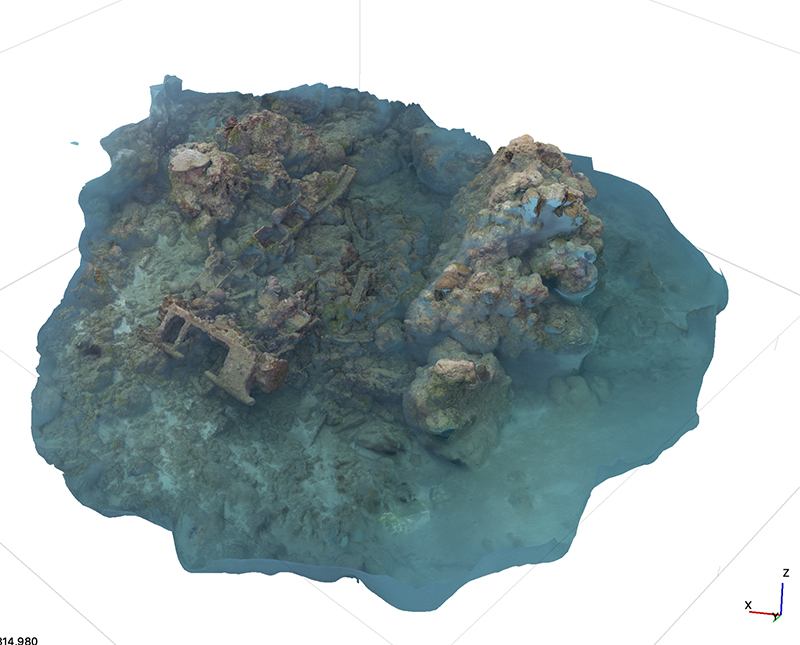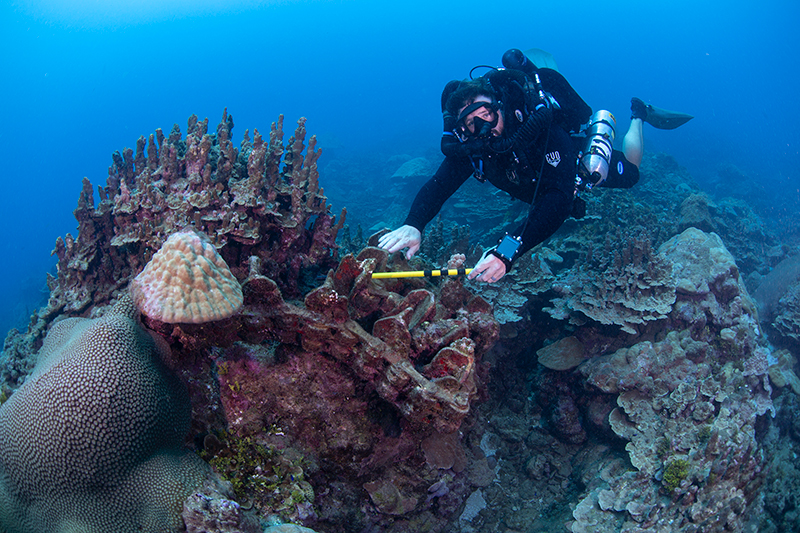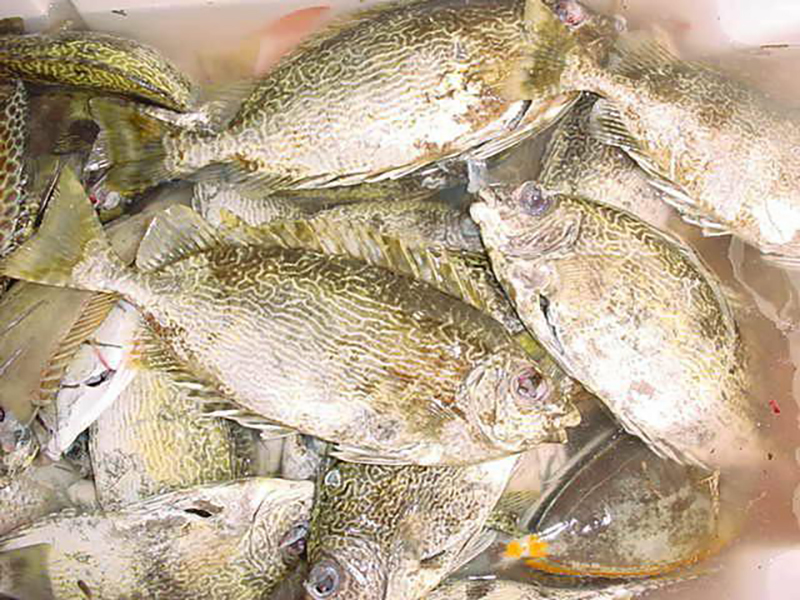Guam: A Biogeographic and Maritime Cultural Landscape Exploration of a World War II Amphibious Battlefield
January 27-February 25, 2023 // July 27-August 23, 2023
Using Oral History to Understand Impacts of World War II Reef Destruction on Guam Today
There have been several oral history projects completed in collaboration with Guam's CHamoru community, but none of them focused solely on maritime traditions and uses of the reefs. As the National Park Service Scientists-in-Parks intern for the exploration of Guam's World War II amphibious battlefield, I helped oversee an oral history project focusing on the reef landscapes within War in the Pacific National Historical Park: how these landscapes have been used throughout different periods in Guam's history and how they may have been affected by World War II.

Prior to and during the American invasion of Guam in July 1944, the U.S. Navy's Underwater Demolition Teams (UDTs), the precursors to the Navy SEALs, strategically destroyed sections of the coral reefs along the landing beaches at Asan and Agat. The purpose of this destruction was to remove obstacles and areas of the reef itself that would prevent landing crafts from making their way to the beaches and to create channels to facilitate the distribution of supplies to troops onshore.

The demolition of the reef enabled the liberation of the island from Japanese occupation. But what were the long-term effects of the reef destruction on the island and its inhabitants, if any? Using oral history, that's what we are hoping to learn.
Questions we asked community members focused on:
- Have demolition impacts affected the ecosystem of the island as a whole?
- Have the channels created by the UDTs had an impact on the effects of storm surge and erosion?
- Did demolition impacts affect the CHamoru community’s usage of the invasion beach areas?
- Did demolition or other World War II impacts affect the types of food the community can harvest from the sea?
During our time in Guam, we interviewed three individuals, two of them grew up in the village of Asan and the third moved to the area several years ago from the Philippines. We talked to each individual for over an hour about their experiences using the reefs around Asan as well as their awareness of underwater artifacts from World War II.

Through story maps, the oral histories collected during this project will be used to bring awareness to the impacts of World War II on modern Guam and its community and to highlight the many ways that the landscapes of Asan and Agat beaches were used historically and how they are being used today. Specifically, War in the Pacific National Historic Park and other educational institutions will use these story maps to show the importance and evolution of the CHamoru's maritime culture at Asan and Agat beaches.
By D. Blair Moore, National Park Service Submerged Resources Center and Ocean and Coastal Resources Branch
Published October 3, 2023